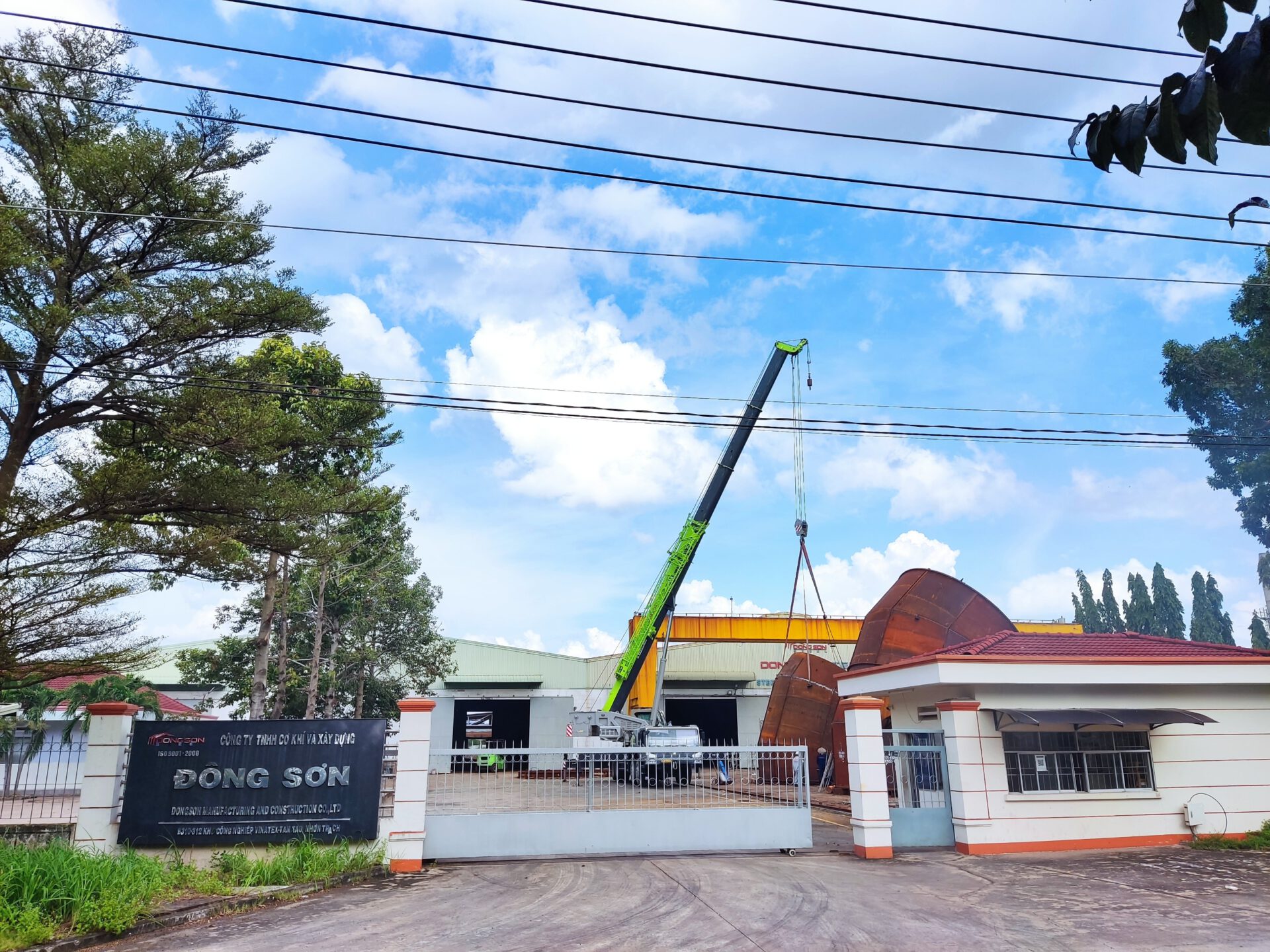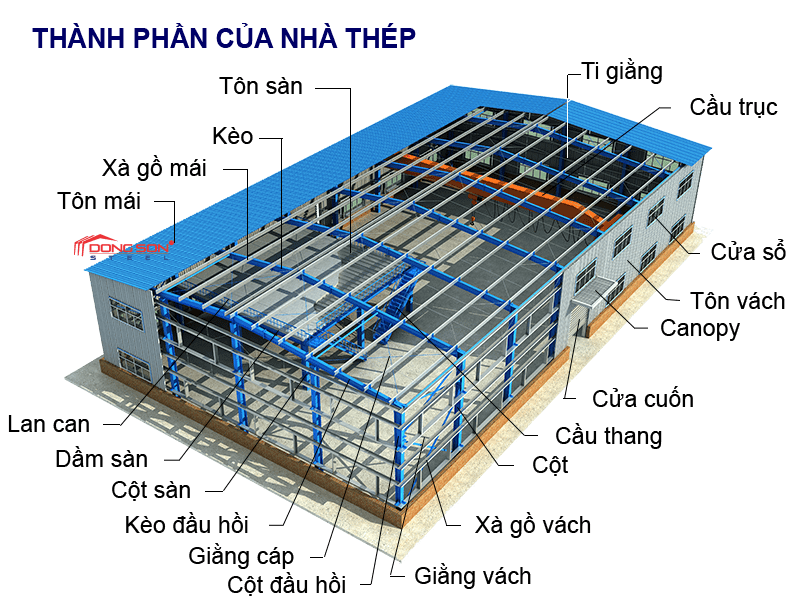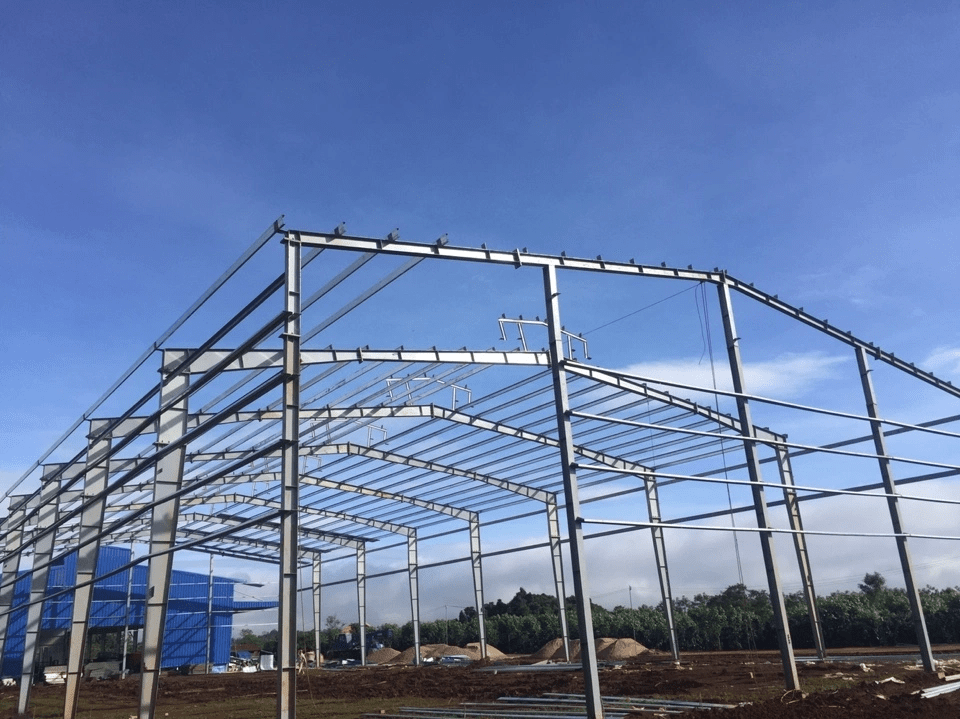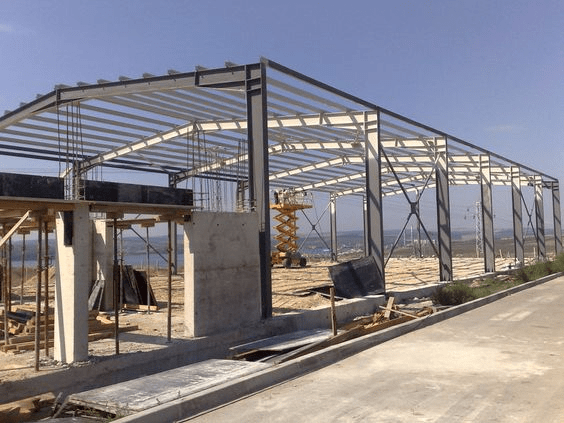INTRODUCE
- DONGSON STEEL®is a trademark of Dong Son Mechanical and Construction Company Limited.
We specialize in designing, manufacturing, and erecting steel buildings and steel structures.
We provide comprehensive solutions for steel buildings and steel structures for Industry, Agriculture, Aviation, Civil Construction and Commerce.

Starting operations in 2007, DONGSON is one of the leading companies in the field of pre-engineered steel buildings, steel structures and industrial construction. DONGSON Certified for ISO 9001:2015 Quality Management System
DONGSON Steel has gained the trust of domestic and foreign customers for the quality of its products and services, providing the most effective solutions in the field of steel buildings and steel structures.
With a strong investment strategy in technology, our factory is equipped with modern machinery for the production process. Our goal is to provide customers with high quality products based on the advantages of advanced production systems.
- STEEL HOUSES AND APPLICATIONS
Steel buildings have a long history of development. In England since the late 18th century, they have tried to build fireproof steel structures for agriculture and the textile industry. Enter
- DEVELOPMENT HISTORY OF STEEL BUILDINGS
- WHAT IS A PRE-ENGINEERED STEEL BUILDING?
Let's find out more Development History of prefabricated steel buildings.
Prefabricated steel buildings are also known as steel buildings
Steel buildings have a long history of development. In England since the late 18th century, they have tried to build fireproof steel structures for agriculture and the textile industry. In the late 19th century, “Portable Steel Houses” were sold to gold mining pioneers. During that period, the first skyscrapers were built.
At the beginning of the 20th century, Steel Buildings became more popular around the world. After World War II, steel buildings were widely accepted because of their cost effectiveness, improved materials, and wide range of applications.
In the US, nearly 70% of newly built low-rise buildings are steel buildings or combined with steel buildings. In more than 80 years, more than 14 million steel buildings have been built.
The Steel Building construction system is gradually becoming the fastest growing building system in the world with advantages for single-story non-residential buildings and is an effective choice to replace traditional building systems.
So what is a pre-engineered steel house? Let's Dong Son Steel Find out in the following article
Prefabricated steel buildings or steel buildings are a type of house where the load-bearing components are made of steel materials. Prefabricated steel buildings are constructed and erected based on available and approved architectural and structural design drawings.
The complete construction process of a pre-engineered steel building usually goes through 3 basic steps as follows:
- Optimal design
- Processing and manufacturing steel structures
- Installation at construction site
Steel structures can be pre-produced at the factory and then transported to the construction site for complete installation or can also be manufactured right at the construction site in certain cases.
Pre-engineered steel buildings are currently widely used in many fields such as:
- Factory
- Storehouse
- Aircraft shelters, barracks
- Show rooms, supermarkets, hotels, restaurants, houses, high-rise buildings...
Main Ingredients Constituting Steel Buildings?
Steel Buildings is composed of 5 main components:
- Foundation structure and foundation bracing system: Foundation and foundation bracing are the load-bearing structures for the entire load of the house. The foundation is constructed and anchor bolts are installed waiting to connect with the steel columns.
- Main load-bearing steel frame system: columns, trusses, beams
- Other structural systems: longitudinal bracing, diagonal bracing, purlins, purlin tie rods...
- Covering system: Roof panels/walls/walls...
- Roof drainage system: Gutters, gutters and accessories.
The above 5 components are divided into structural systems as follows:
- Main structural system: The foundation and main steel frame system are considered the backbone of the structure Steel Buildings
- Prefabricated steel building foundation: The foundation is a technical structure located at the bottom of the building with the function of bearing the load of the entire building. Depending on the load of the building when designing, engineers will calculate the content of the building. force at the foot of the steel column from which appropriate foundation types will be calculated and designed. In the construction of prefabricated houses, there are currently 4 types of foundations commonly used: single foundation, strip foundation, raft foundation and pile foundation.
- Main load-bearing steel frame system: includes columns, trusses, beams designed to ensure durability and economy to bear the entire design load of the building (self load, hanging load, live load, wind load, load earthquake…)
- Secondary structural system: The sub-structural system is also very important for the building
- The longitudinal and diagonal bracing systems help stabilize the frame structure, transfer wind loads, crane braking loads and other vertical loads to the foundation, thereby creating vertical stability and increasing spatial stiffness in addition to the bracing system. It also has the effect of reducing the out-of-plane calculation length for compression structures (Columns, truss bars...) and creating favorable and safe conditions during the erection process.
- Purlins are structural components designed to support the building's covering system (roofing, wall coverings) and hanging systems, if any. Purlins come in many different shapes, but most commonly use C or Z shapes,
- The outer covering system helps the building protect against rain, sun, wind and adverse impacts from the outside environment, and also has the effect of increasing the aesthetics of the building.
- Roof drainage system is a rainwater drainage system on the roof of a building. Helps keep water circulation clear and avoids corrugated iron overflowing causing leaks and water leaks into the building. Materials used for roof drainage systems are very diverse such as stainless steel, color-coated corrugated iron, PVC plastic... depending on the attachment used to choose the appropriate material.

- ADVANTAGES OF PREfabricated STEEL BUILDINGS
Reduce Construction Time
- Prefabricated steel buildings save 40% in construction time
Low initial investment cost
- The main components are reduced by 40% compared to traditional houses
- Additional components are reduced by 30% compared to traditional houses
- Less foundation requirements due to the lighter overall weight of Steel Buildings
- Faster component production and erection means less labor costs.
Lower life cycle costs
- Faster return on investment
Flexibility and Durability
- Eternal: It's true. Steel buildings can provide a durable, reliable, virtually maintenance-free structure that has lasted for decades. Steel buildings can be used for up to 80 years.
- Use Steel buildings are often longer lasting than houses built with concrete, mortar, wood or other typical building materials (according to MBMA).
- Steel buildings can easily be expanded at any stage of the project and after being put into use
- Any removed parts can be rebuilt and reused in other projects.
Low maintenance costs:
- Durable finishing materials maintain beauty for many years without requiring care
- Steel buildings require less maintenance than any similar type of building using other materials.
So Should We Build Prefabricated Steel Buildings?
- CONCLUDE
In short, Steel Buildings Very flexible in the installation and construction process. Businesses can consider more about the purpose, finances, and other conditions to consider whether to build pre-engineered steel buildings or not? Thank you for following the above article of Dong Son Steel
Dong Son Mechanical and Construction Company Limited
- Lot B310-311-312 Vinatex Tan Tao Industrial Park, Hiep Phuoc Town, Nhon Trach District, Dong Nai Province
- Phone: (251) 3569192
- Mobile: 098 513 4499
Ho Chi Minh City Transaction Office
- No. 186, Street 1, Tan Phu Ward, District 7, City. Ho Chi Minh
- Phone: (028) 6261 4499
- Email : info@dongsonsteel.com.vn
- FB: https://www.facebook.com/dongsonsteel.com.vn





